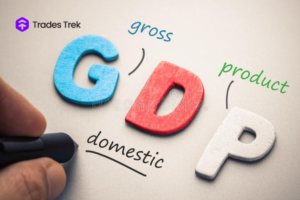The famous quote by Warren Buffet, “Buy low, sell high,” has been said by various analysts and top investors when asked about the best time to invest. If done correctly, the “buy low, sell high” strategy works. Over time, the market follows a cycle where people are fearful and sell stocks, then “greedy” and buy stocks, then back to being fearful again.
With the buy low, sell high strategy; investors try to do the opposite of the general public. When others are fearful, they buy at low prices. Then, investors sell at higher prices when people start purchasing more stocks again.
Prices go up, and frequently, the shares aren’t worth what people pay. When prices soar beyond the actual value of an investment, you should be fearful. You don’t want to buy when the prices are high and over-inflated.
When market forces are fearful, they sell all their shares, and because these shares flood the market, prices drop drastically. The dramatic drop in prices creates unique buying opportunities, which is the best time to be greedy because you can scoop up these shares at lower prices.
This strategy works because you’re buying stocks on sale. Everyone sells when the market crashes, and investments generally take a downturn. That means you can scoop up some shares of great companies at highly discounted prices.
When the dust settles, and the markets start to rise again, your investments will grow.
However, this generic quote of “buy low and sell high” can confuse beginner investors. The question of when it will be low arises in the minds of newer investors. Are there measures to determine when a stock is low or high? Is there a particular point in the chat that is considered low? Should you wait until you get to the bottom of the chart to buy?
As a novice investor, you’ve probably read widely to understand different stock terminologies associated with the stock market and even gone further to perform different types of analysis on how to know a good stock ranging from fundamental research to technical analysis. After much analysis, you’ve settled on some stocks you feel have the potential to help you build Long-Term Wealth. But is that all you need to sort out to ensure that you maximize the chances of achieving sustainable gains or are there more hurdles to maneuver? In this article, we’ll be revealing reliable methods to know the best time to invest. That is when it is considered a ‘buy low’ time to invest. Firstly, to know when to invest, you need to set a margin of safety in your risk profile to know the best time to buy stocks. What is the margin of safety ? Read on to know.
What is the Margin of Safety?
The “margin of safety” is a principle of investing in which investors only purchase securities when their market price is significantly below their intrinsic value. In other words, when the market price of a security is significantly below your estimation of its inherent value, the difference is the margin of safety. Because investors may set a margin of safety with their risk preferences, buying securities when this difference is present allows an investment to be made with minimal downside risk.
The margin of safety requirement is based on the risk profile. For instance, after doing your analysis, if you’re confident that Dangote Cement is a good stock pick for you, you might apply your margin of safety at about 15%. Let’s say the stock is trading for 115 NGN per share, and after much analysis, you conclude that the value of the stock is about 122 NGN. It’s advisable to be in a 15% margin of safety, below your calculated value of about 104 NGN per share. It’s pertinent to note that the more risk or less confidence you’re about a particular stock, the higher the margin of safety. If you need more assurance in Dangote Cement, a 20% margin of safety is a better option.
You are to immediately start at the lowest point of the chat because you might wait for years and not still have the stock. Instead, you need to watch the stock closely. Only buy when the demand is high; wait for a pullback.
The best time to invest is not when the stock market is rising because you must understand when to manage risk and use the stop loss. Find areas within the trend where it’s taking a break; that’s the best time to buy.
You might have a question about what to do if the stocks keep moving up without a pullback. It can be frustrating when you’ve done your analysis and need to reach your entry point, the temptation to buy at that point is always high. Could you not buy it?
Bottom Line
It’s always a good time to invest when finding the security you’ve determined to invest in is undervalued by the rest of the market.
On the other hand, you’ll likely find more opportunities to buy shares of undervalued companies during a broad market decline.
Suppose there’s a stock with a reasonable price. Even if it goes down in the short run, trust the research you’ve done to produce long-term gains. But pay attention to the company entirely. Consistently make sure your investment thesis is still valid.
There’s never really a picture-perfect moment to invest or to sell. And buying in at the low point and selling at the top is almost impossible to get right.
The best time to buy stocks is when a given stock’s share price is low. There is always a chance that they will drop even further, but buying at a low price is significantly safer than buying at a high price where the stock price is unlikely to climb much higher. Instead, prices may drop, and you will have to sell at a loss. When you buy shares at a low price, they may fall further, but there is a significantly higher chance that they will soon turn around and rise, allowing you to sell them at a profit.
In conclusion, investing long-term is the best way to get a positive return. This approach gives your investment a chance to ride out stock market ups and downs, and eventually, you would hope to sell for a profit.




